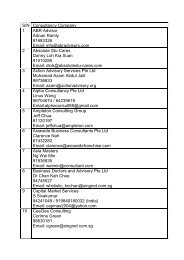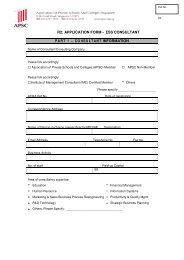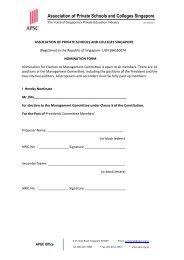A New Dynamic: Private Higher Education
A New Dynamic: Private Higher Education
A New Dynamic: Private Higher Education
- No tags were found...
You also want an ePaper? Increase the reach of your titles
YUMPU automatically turns print PDFs into web optimized ePapers that Google loves.
Growth and typology1movements in the nineteenth or twentieth century. In the United States, the earlycolleges such as Yale and Princeton, which had also been something of Protestantdenomination,state-government mix, became bona fide private. 14Religion remains a major type of PHE, but two changes are noteworthy. One is theincreasing mix of religions. In Asia and especially Africa, there is a rise of bothevangelical and Islamic faith-based orientations in PHE. Where Muslims are a minority,the founding of their own PHE institutions is an option; where they are a majority,public institutions may provide accommodation, as in Egypt. African countries such asKenya and Nigeria now have Catholic, evangelical and Islamic institutions.The other change has been the diminishing force of religion, reflecting a decline inreligious identity in much of the non-Muslim world. Although a prime motive forownership and top leadership often remains religious, it is not a prime motive formany students or professors. Increasingly, Catholic universities are among the manynon-profit institutions forced to adhere to a business plan more suitable to acompetitive marketplace. 15 It is important to note that the effective ownership ofmost Catholic universities is not the Vatican. 16Yet, as religion has declined, the cultural sector has been bolstered by other identities.Obviously, religious and ethnic identities can overlap. In addition, the ethnic thrust canbe strong in countries with heterogeneous populations. Central and Eastern Europe(Georgia, Hungary, Poland, Romania and Slovakia) have furnished examples of suchPHE in the post-Communist period. South East Europe University of Tetovo (theFormer Yugoslav Republic of Macedonia) simultaneously shows multi-ethnic, multilingualand multi-religious dimensions.Where these protective values stress safety, tranquillity, order and authority, someparents opt to send their daughters to religious or other private institutions. Indeedprotective values can be a major motivation for women's colleges. The women'scollege is prominent in Asia, the United States and elsewhere. 17 Thailand shows thateven colleges that are not formally or fully for women may be overwhelmingly forthem (Christian University, Saint Louis College and Mission College). Individualcolleges may be both gender- and religion-based. Of course, where women were14 Whitehead (1973). United States society was more about religious pluralism - to each his own - thanreligious mixing.15 Even prior to the present turn to marketplace management many religious institutions had solidbusiness practices and hierarchical management, a point often made in contrast to the publicuniversities (e.g., in Africa), but we know more about leading than ordinary religious institutions.Evangelical institutions appear to border on the semi-elite type with regard to business emphasis.16 In fact, a revitalization, of sorts, of the Catholic impulse comes now not from the Vatican or the localdioceses, but from religious congregations or movements, such as Jesuits, Salesians, Opus Dei and theLegion of Christ, who have continued to open or take control of universities in Latin America.17 Purcell, Helms, and Rumbley (2005) .17












